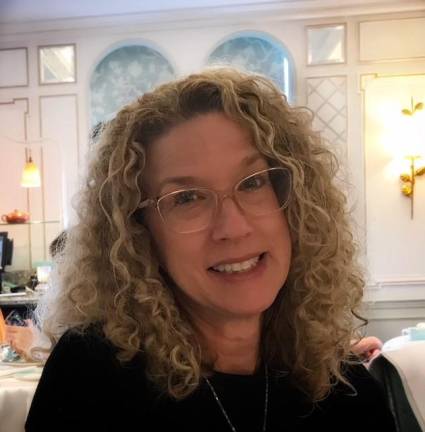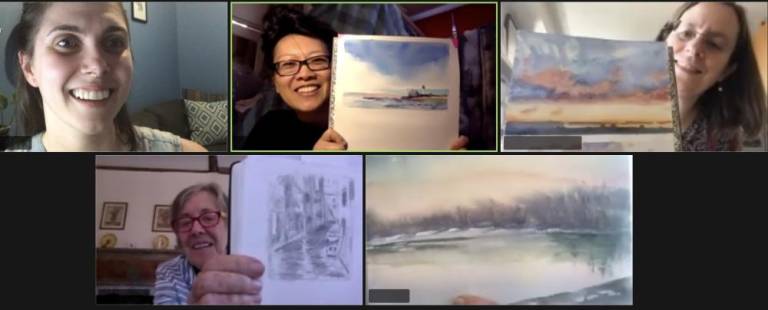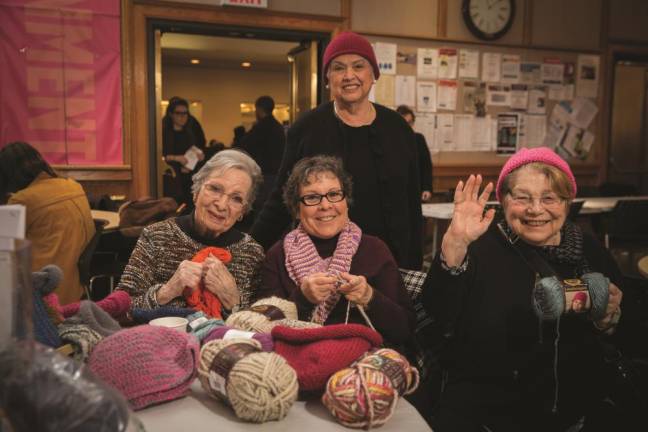Making Memorable Senior Moments
92Y’s senior program continues to thrive through the direction and devotion of Julia Zeuner
Before the pandemic, the Himan Brown Senior Program at the 92Y was offering close to 70 classes per week attended by up to 700 members from all the five boroughs. When COVID closed their Lexington Avenue campus, Julia Zeuner had the daunting task of keeping the program active virtually for its seniors, aged 60+, a majority for which she didn’t even have an email address.
Once she and her staff were able to reach all their members through robocalls and emails, the next challenge was assisting them with using the videoconferencing platform of Zoom. With the help of their team, additional 92Y staff members, volunteers from an area high school and the children and grandchildren of members, who all provided tech support, they were able to successfully launch online in March. “So we have a lot of people who are on Zoom and they’re in their 80s and 90s,” said Zeuner, who, as director, was at the helm of this incredible feat. “It’s really been wonderful to watch.”
Zeuner, who earned a master’s in social work from Columbia with a concentration in geriatrics, always knew her career path would lead to caring for older adults. The St. Louis native-turned Upper West Side resident feels “very privileged” to be able to work to have this demographic, which can become “invisible at a certain point,” not only visible, but respected and celebrated.
And there is much cause for celebration at Himan Brown, which is thriving through enriching programming — that includes art classes, writing workshops and fitness groups — in keeping with its mission of “lifelong learning, community and connection.” Besides maintaining this strong senior community, which had been in existence at the 92Y since 1950, pivoting to virtual gatherings has also enabled the welcoming of 70 new members, some who join in all the way from the West Coast.
Pre-COVID, what was the Himan Brown community like? Were the members all from the Upper East Side?
Prior to COVID, members came from all five boroughs, including Staten Island. The majority were Upper East and Upper West Siders, but we had people coming from all over Manhattan. So it had a very wide reach, and people used it in different ways. Some people were there every day. Other people had very specific things that they were interested in doing, so they would come for the fitness or studio art classes or certain lectures. We also have a very large lounge space and people would just hang out there in between classes just to be with friends. There was a very strong community element to it, in addition to very strong classes.
Now, you are offering more than 30 programs over Zoom. Which currently are the most popular among members?
I would say our most popular class is our art history class. It usually gets about 130 people on Zoom watching it. But we have a number of lecture classes that are also very popular. We have an ongoing Shakespeare class, political science and literature classes. Those all draw a nice crowd, but then, what also draws a crowd and what is very important to people are our more discussion-oriented classes where there’s more interaction. We have a world events class, a book group and a studio art class, where people can interact. Every day, we have a group that’s led by a social worker. We’ve always had those kinds of groups; we call them growth groups. The facilitator will put out a topic and the group will talk about it. Those have become very important to people and we’ve expanded those because during COVID, we’re finding that people really need that extra support.
How did you and your team help the program go virtual? I read an interview with you where you said that you didn’t even have all the members’ email addresses.
Yeah, I look back now at that time and it’s like a blur. We had maybe a fourth of the email addresses of our members. A lot of people, even if they had one, they never used it. So that was the first challenge — calling people, reaching out in any way possible to get everyone’s email addresses before we closed. So then once we closed, we sent out some robocalls and emails to tell people that we were going to be doing what we were doing. And as we started, the list kept growing and we still, even today, get people who want to be added. It took a couple of weeks, but we got everybody. Even before we closed, we had a few of our fitness instructors record with our professional photography staff a few fitness classes and a lecture, so that even in the beginning, we were able to send those out so people could continue to exercise. And then I just started sending out a nightly email saying, “Well, this is what we’re gonna do tomorrow,” and I’m still sending out an email every night with the programming for the next day and a look at what’s coming up.
You also helped members with the technological component. Do you have any blooper stories from that time?
The silver lining for us is that we always wanted to create some kind of virtual presence because we have members who go to Florida for the winter or are sick and home or in a rehab because they have an injury. People didn’t realize their cameras were on. We’ve seen people in not as many clothes as they should have been in on film. One time, I was leading a group and someone’s cellphone rang and she left the room to talk, but didn’t mute her Zoom, so we couldn’t even get to her to tell her.
Tell us about some longtime members.
Sue Lepper was president of our advisory council — members who plan events and programming — for several years. She has remained very active, serving on several committees of the advisory council as well as volunteering to help out whenever there is a need, including helping to acclimate new members. She actually had an injury and was out for a while and so the fact that we went virtual was amazing for her because she was able to be back with us very fully. And we have other members who have been struggling with illness and depression, and just having the support of our program and our community and our social work-led support groups have made an incredible difference to them and, literally, I believe, saved their lives. Bill Perlmutter is an older member who is the type of person who decided at this age [85] that he was going to try all kinds of new things that he had never done before. So he started writing and is a really great writer and is in a couple of our writing classes. We have three ongoing writing groups [The Personal Essay, Poetry Writing and Memoir Writing] and the people in them have become their own support networks and communities. And those have expanded since the virus.
To learn more, visit www.92y.org/himan-brown.aspx


